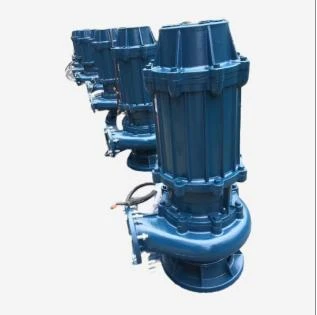Azerbaijani
- Afrikaans
- Albanian
- Amharic
- Arabic
- Armenian
- Azerbaijani
- Basque
- Belarusian
- Bengali
- Bosnian
- Bulgarian
- Catalan
- Cebuano
- Corsican
- Croatian
- Czech
- Danish
- Dutch
- English
- Esperanto
- Estonian
- Finnish
- French
- Frisian
- Galician
- Georgian
- German
- Greek
- Gujarati
- Haitian Creole
- hausa
- hawaiian
- Hebrew
- Hindi
- Miao
- Hungarian
- Icelandic
- igbo
- Indonesian
- irish
- Italian
- Japanese
- Javanese
- Kannada
- kazakh
- Khmer
- Rwandese
- Korean
- Kurdish
- Kyrgyz
- Lao
- Latin
- Latvian
- Lithuanian
- Luxembourgish
- Macedonian
- Malgashi
- Malay
- Malayalam
- Maltese
- Maori
- Marathi
- Mongolian
- Myanmar
- Nepali
- Norwegian
- Norwegian
- Occitan
- Pashto
- Persian
- Polish
- Portuguese
- Punjabi
- Romanian
- Russian
- Samoan
- Scottish Gaelic
- Serbian
- Sesotho
- Shona
- Sindhi
- Sinhala
- Slovak
- Slovenian
- Somali
- Spanish
- Sundanese
- Swahili
- Swedish
- Tagalog
- Tajik
- Tamil
- Tatar
- Telugu
- Thai
- Turkish
- Turkmen
- Ukrainian
- Urdu
- Uighur
- Uzbek
- Vietnamese
- Welsh
- Bantu
- Yiddish
- Yoruba
- Zulu
Telephone: +86 13120555503
Email: frank@cypump.com
Noy . 19, 2024 01:04 Back to list
slurry pump material
Understanding Slurry Pump Materials A Comprehensive Guide
Slurry pumps play a crucial role in various industrial processes, particularly in the mining, wastewater treatment, and construction industries. These pumps are designed to transport mixtures of liquid and solids—called slurries—effectively and efficiently. One of the key factors influencing the performance and longevity of a slurry pump is the material from which it is constructed. This article delves into the types of materials used in slurry pump manufacturing, their properties, advantages, and the considerations that should guide material selection.
Types of Materials Used in Slurry Pumps
1. Metallic Materials - Cast Iron Often used for general-purpose applications, cast iron offers good wear resistance and strength. It is ideal for less abrasive slurries and is also cost-effective. - Nickel-Alloyed Steels These materials enhance the corrosion resistance of pumps and are suitable for more aggressive environments. Nickel alloys are particularly beneficial in applications involving acidic slurries, where the risk of corrosion is high. - Stainless Steel Known for its excellent corrosion resistance, stainless steel is preferred in applications involving clean or mildly abrasive slurries. Its durability makes it a good choice for food processing or pharmaceuticals.
2. Rubber Linings - Natural Rubber It provides excellent resilience and wear resistance, particularly in applications with low to moderate abrasion. Natural rubber is often used in less aggressive environments where chemical exposure is minimal. - Synthetic Rubber (e.g., SBR, NR, and Neoprene) These materials offer improved thermal stability and resistance to various chemicals. Synthetic rubbers are often used in more demanding slurry conditions, providing a flexible and durable lining that can handle a more abrasive mixture.
3. Polyurethane This material has gained popularity for its superior abrasion resistance. It is particularly used in pumps subjected to highly abrasive slurries and is known for its ability to extend service life significantly compared to traditional materials.
4. Ceramics Advanced ceramic materials are used in specialty applications, particularly those requiring maximum wear resistance. Though ceramics are less common due to brittleness and cost, they can be found in high-wear components of slurry pumps.
slurry pump material

Importance of Material Selection
The selection of the right material for slurry pumps is vital for several reasons
- Wear Resistance Slurry pumps operate in environments with abrasive materials. The right material choice can minimize wear and prolong pump life, reducing downtime and maintenance costs. - Corrosion Resistance In industries where slurries contain corrosive chemicals, selecting a material that can withstand such conditions is essential. Using the wrong material can lead to premature pump failure. - Operational Efficiency The pump’s efficiency can be influenced by the choice of material. For instance, a pump with a rough surface can experience increased fluid friction, leading to energy loss. - Cost-effectiveness While it may be tempting to opt for the least expensive material, the long-term cost of maintenance and replacement should also be considered. Investing in high-quality materials might result in significant savings over time.
Factors to Consider in Material Selection
1. Type of Slurry Understanding the composition of the slurry—including particle size, concentration, and chemical makeup—will guide the appropriate material selection. 2. Temperature The operational temperature can affect material performance, particularly for rubber and polymers. Ensure that the selected material can withstand the expected temperature range. 3. Pump Design The design of the pump, including its layout and intended use, may influence material choice. For instance, some designs may benefit from the flexibility of rubber linings, while others may require the rigidity of metal structures. 4. Environment The operational environment, including exposure to chemicals and wear conditions, should dictate material decisions. High-impact environments may necessitate tougher materials such as ceramics or specially hardened steels.
Conclusion
In summary, the choice of material for slurry pumps is a critical decision that affects pump performance, durability, and overall cost-effectiveness. Understanding the properties, advantages, and applications of various materials—ranging from metals and rubbers to advanced ceramics—enables industries to select the best options tailored to their specific needs. By carefully considering the type of slurry, pump design, and environmental conditions, companies can ensure optimal performance and longevity of their slurry pumping systems.
-
China Small Slurry Pump Manufacturer - High Efficiency Small Centrifugal Slurry Pumps for Mining & Industry
NewsJun.24,2025
-
Custom Drilling Mud and Slurry Pump Supplier - High Efficiency, Tailored Solutions
NewsJun.10,2025
-
Supply Vertical Submersible Sewage Pump High-Efficiency WQ/QW Pumps Supplier
NewsJun.10,2025
-
Premium Sewage Ejection System & Pumps Efficient Waste Removal
NewsJun.09,2025
-
Premium Wholesale Slurry Pump Impellers Durable & Efficient Slurry Handling
NewsJun.09,2025
-
Top Sewage Pump Companies Durable Industrial Solutions for Efficiency
NewsJun.09,2025










